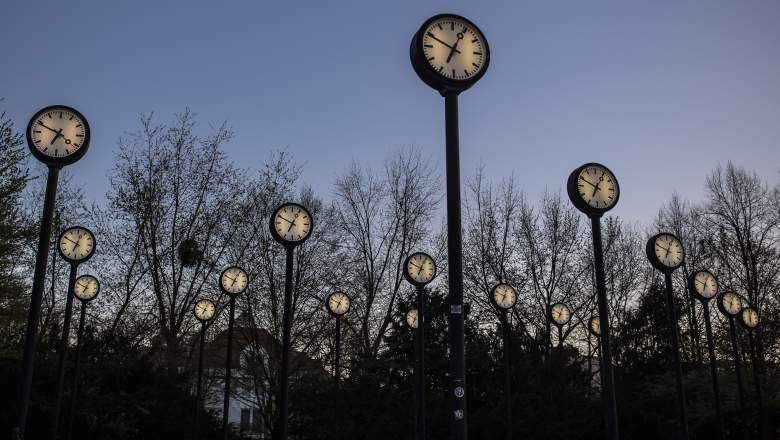
Getty Images
The second Sunday of March is the time each year when Daylight Saving Time begins, so Sunday, March 8 at 2 a.m. is when all the states who observe Daylight Saving Time will “spring forward” and move the clocks from 2 a.m. to 3 a.m.
Of course, it’s also fine to change your clocks before you go to bed Saturday night. And don’t worry about your cell phone, those update automatically if they are receiving a cellular signal.
A popular way to remember what to do for Daylight Saving Time is the phrase “spring forward, fall back” because, in the spring, clocks have to be moved forward one hour ahead of the local time, and in the fall, clocks have to be set back one hour of the local time. Here’s what we know about the origins of that phrase.
The Phrase Dates Back to 1936
According to Word Histories, the first two instances of the phrase that they could find were both from the newspaper The Brooklyn Citizen, first on Saturday, April 25, 1936, and the second on Saturday, April 23, 1938, reminding its readers to change their clocks before going to bed on those nights.
The first headline is “Remember to Put Clocks Hour Ahead on Retiring” and the article reads:
Turn your timepieces ahead at 2 a.m. to-morrow when Daylight Saving Time goes into effect. “Spring forward—Fall back,” is the way to remember the direction. Residents of more than 1,000 cities, towns and hamlets in eleven States, Canada, Hawaii and the Philippines will join in the mass movement.
Many of the localities will observe the custom for the first time. Connecticut has repealed its law forbidding the public display of any other but Eastern Standard Time; Rochester, one of the cities which has hitherto refused to make the change, will turn its collective clock ahead, and in New Hampshire, where an anti-daylight saving time statute still stands, twenty-one cities will ignore it.
A considerable portion of the world instituted the sun-saving time from a week to a month ago. Great Britain, France and Belgium adopted the schedule last Sunday, and other Continental countries observing it include the Soviet Republics, the Netherlands and Portugal.
The 1938 article mentioned the phrase again and reminded readers that “railroads and other transportation lines will adjust their time-tables to conform with the summer arrangement.”
The 1930s is also when the March/April celebration known as “spring break” began. It started when the Colgate University swimming coach brought his team to Fort Lauderdale, Florida, to train in the spring of 1936, according to TIME. By 1938, hundreds of swimmers were coming to Florida to train in the warm weather and then by the 1970s, it had expanded to more than just college swimmers. By the mid-1980s, over 300,000 college students descended upon Fort Lauderdale.
According to Punxsutawney Phil, It’s an Early Spring This Year
Every February 2, groundhog Punxsutawney Phil emerges from his den to find out if we’re going to have six more weeks of winter or if it’ll be an early spring. According to Live Science, most years Phil sees his shadow and that means a longer winter — 104 years have featured a longer winter prediction, compared to just 20 early springs. But 2020 was one of those years where Phil didn’t see his shadow and everyone rejoiced at the prospect of an early spring.
In our neck of the woods, Phil’s forecast has proven true; we have started having spring weather in Iowa fairly early this year. But Live Science reports that overall, Phil’s success rate isn’t great. The Stormfax Almanac reports that Phil’s forecasts have been correct only about 40 percent of the time.
Regardless of whether he is correct or not, Phil’s big day still draws thousands of tourists to Gobbler’s Knob, Pennsylvania, each February. But if you can’t be there in person, Phil started releasing his prediction via text message in 2010 and on social media in 2012.
READ NEXT: Why Do We Observe Daylight Saving Time?
Comments
Daylight Saving Time 2020: What Time Do We Spring Forward Tonight?